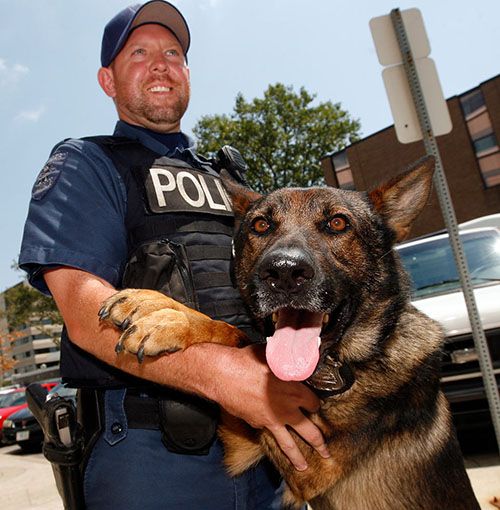K-9 Officers Getting a Second Leash on Life
Posted by Extreme Tactical Dynamics on Jun 29th 2019
German Shepherds are loyal, noble, and smart. These qualities make them great police dogs. A K-9 starts training for police work when it’s still a puppy and usually, these furry cops work until they’re about 7 to 8 years old. However, the breed of German Shepherds often used as police dogs live until they’re 11 to 14 years old.
What this means is police canines retires with a few good dog years left. Those golden years should be spent in a loving home with caretakers that understand their needs. Handlers and their families adopt about 99.9 percent of retired K-9s. Because K-9s are trained to attack and have extensive field experience, living out the rest of their life with their handlers is best.
Unfortunately, this doesn’t happen for every K-9. When a K-9 isn't eligible for adoption by his handler and a suitable home can't be found, he is often sent to a rescue or put down. K-9s living in an unsuitable environment can be unpredictable and possibly dangerous.
Thankfully, there are organizations all over the country, even the world, that help with these heroes’ adoptions.
Facilities Arrange for K9 Comrade Adoptions
When a handler can't adopt, a German Shepherd, rescue is the next best choice for retired police dogs. Many institutions organize these adoptions with the same goal; saving displaced K9s. Some of the most famous German Shepherd rescue organizations include:
•
MWD School/Lackland Air Force Base• K9 Services German Shepherd Rescue
Feel Good K-9 Adoptions
 One of the best adoptee/K9 adoption processes goes on at the MWD/Lackland Air Force Base rescue. This “different” rescue organization pairs displaced K9s with disabled veterans. Think of it as veterans helping veterans.
One of the best adoptee/K9 adoption processes goes on at the MWD/Lackland Air Force Base rescue. This “different” rescue organization pairs displaced K9s with disabled veterans. Think of it as veterans helping veterans.
Not only does the team at MWD organize these adoptions, but it also gives the human and furry veteran a home. While the duo lives in MWD housing, they have both their medical and mental needs eet. K9 officers can have PTSD just like their human comrades and military veterans too. To help them both acclimate to civilian life, they attend therapy sessions.
Although canines and veterans both undergo therapy sessions after retirement, their therapies aren’t identical. The military vets work on regaining a sense of themselves and dealing with physical and mental issues. The K9s learn to adapt to civilian life and is retrained. Instead of sniffing out drugs or leading officers to dead bodies, the K9s practice obedience training and impulse control.
The best part is the retired officer has a human to call his own. They can play fetch, cuddle on the couch, and go for long walks together. The injured soldier has a reason to get out of bed every day, motivation to go outside, and unconditional love that loyal companions dish out; especially when their human needs it most. While one may feel they need the other more, the truth is it’s a perfect situation for them both.
What You Need to Know About Adopting a Retired K9
If you’ve ever visited your local shelter, you know these facilities house many older dogs. You’ll probably see dogs that have a history of aggressive behavior, or even young animals with poor, but not terminal health. Shelters and pounds are often full with less desirable animals because no one wants to take on the responsibility of homing a less than perfect puppy.
But, if you understand the responsibilities associated with adopting an older or injured K9 officer, you are giving that dog the opportunity to enjoy their golden years. Like their human comrades, K9s put their life on the line every day for people they don’t know. It’s in their blood to protect and serve. In their retired years, no K9 should be homeless or left to die somewhere.
If you think you have what it takes to adopt a hero – contact a German Shepherd adoption rescue. The process to adopt these dogs is vigorous and strict, but if you accept the responsibilities, you’ll be giving an officer a second leash on life.
Related Posts
- Can Civilians Use Police Flashing Lights?
- FIRST RESPONDERS AND KIDS at the HOLIDAY SEASON
- Blazing Infernos – California, Oct. 2017
- K9 Police Officers and their Dogs
- IACP 2017 is Just Around the Corner
- Hurricane Harvey: A Tribute to First Responders
 Facebook
Twitter
Google+
Instagram
YouTube
Facebook
Twitter
Google+
Instagram
YouTube

